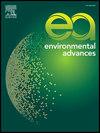Technological advances in high mountains: Development of an augmented reality and IoT Application for snow cover monitoring on Huascaran, Peru
Q2 Environmental Science
引用次数: 0
Abstract
Climate change has had a negative impact on Andean glaciers, especially on the snow-capped Huascaran in Peru, which has experienced a loss of 42 % of its glacier mass. Lack of access to accurate snowpack data complicates understanding and informed decision-making in mountainous environments. To address this problem, an application has been developed based on an AR-IoT architecture that integrates augmented reality (AR) and the Internet of Things (IoT) for the periodic monitoring of snow cover on the Huascaran snow-capped mountain. This application uses data collected from meteorological repositories and simulates IoT interactions, while a mobile app offers an interactive and understandable visualization of the data. The Scrum methodology was applied iteratively, from the creation of the 3D model to the connection with the Ubidots platform to store and share the data. The analysis of 58 readings, obtained between April and May 2023, showed correlations between variables such as snow depth, temperature, and wind speed, which served to validate the operation of the AR-IoT technology implemented. These variables offer an initial understanding of atmospheric conditions in high mountains. In addition, the technology developed has the potential to expand to include more relevant data in future analyses. The tool demonstrates the effectiveness of combining these technologies for monitoring high mountain snow cover and making informed decisions about water resources management.
高山技术进步:开发用于监测秘鲁瓦斯卡兰雪盖的增强现实和物联网应用程序
气候变化对安第斯山脉的冰川产生了负面影响,尤其是秘鲁白雪皑皑的瓦斯卡兰冰川,其冰川面积减少了 42%。由于无法获得准确的积雪数据,对山区环境的了解和知情决策变得更加复杂。为了解决这个问题,我们开发了一个基于 AR-IoT 架构的应用程序,该架构集成了增强现实(AR)和物联网(IoT),用于定期监测瓦斯卡兰雪山的积雪情况。该应用程序使用从气象资料库收集的数据,并模拟物联网互动,而移动应用程序则提供交互式、易懂的可视化数据。从创建三维模型到与 Ubidots 平台连接以存储和共享数据,Scrum 方法被反复应用。对 2023 年 4 月至 5 月期间获得的 58 个读数进行的分析表明,雪深、温度和风速等变量之间存在相关性,这有助于验证所实施的 AR-IoT 技术的运行情况。这些变量提供了对高山大气条件的初步了解。此外,所开发的技术还有可能在未来的分析中扩展到更多相关数据。该工具展示了结合这些技术监测高山积雪并就水资源管理做出明智决策的有效性。
本文章由计算机程序翻译,如有差异,请以英文原文为准。
求助全文
约1分钟内获得全文
求助全文
来源期刊

Environmental Advances
Environmental Science-Environmental Science (miscellaneous)
CiteScore
7.30
自引率
0.00%
发文量
165
审稿时长
12 weeks
 求助内容:
求助内容: 应助结果提醒方式:
应助结果提醒方式:


